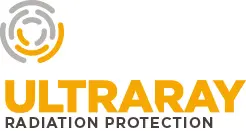When hospitals or clinics need to install or upgrade radiation shielding for imaging control areas, they typically consider two main options: modular control booths or traditional built-in construction.
While both are designed to protect staff from radiation exposure, they differ significantly in terms of installation time, cost, scalability, and operational disruption. The choice goes beyond budget—it's a strategic decision that impacts workflow efficiency, regulatory compliance, and long-term flexibility.
If you’re evaluating shielding options for an existing facility or planning new construction, this guide will help you understand the trade-offs and determine which method best meets your goals.
Understanding the core differences
Modular control booths are prefabricated structures designed for quick installation and long-term adaptability. Unlike traditional construction, where radiation shielding materials like sheet lead and lead-lined drywall are permanently integrated into walls, partitions, and fixtures such as lead-lined doors, modular booths are semi-permanent by design. This gives them a distinct advantage in environments where flexibility, ease of relocation, or minimal disruption is a priority.
You can explore an interactive modular control booth builder here to see how one could be configured for your facility.
Traditional construction, on the other hand, involves a permanent build-out using standard construction methods and materials. It’s often the preferred route for new facility builds, where shielding requirements can be planned and incorporated into the architectural design from the start. This approach is familiar to most contractors, requires no learning curve, and is well-suited to projects with tight timelines or experienced building teams.
If you’re unsure about how much lead shielding is required for X-ray rooms, check out Ultraray Group Inc.'s guide on determining the correct lead thickness for X-ray room construction.
How does each option impact timelines and operations?
One of the most compelling reasons medical facilities choose modular booths is the speed and simplicity of installation. Because they're fabricated off-site and assembled with minimal construction involvement, they can often be set up with little to no operational downtime.
There’s no construction dust, no demolition, and no need to shut down nearby exam rooms or hallways. For hospitals that can’t afford to disrupt patient flow or diagnostic schedules, that’s a serious advantage.
Traditional construction also tends to be more invasive. Even small retrofits can require demolition, framing, inspections, and finishing work—each of which can slow things down and create logistical headaches. That said, traditional methods usually involve more readily available materials and shorter lead times. Shielding components and construction supplies can often be sourced quickly, especially if the job is local.
Scalability vs. permanence: Think long-term
Modular booths really shine when flexibility is a concern. If you need to relocate a room due to expansion, renovation, or regulatory changes, a modular unit can be dismantled and moved. That’s not an option with traditional construction—once it’s built, it’s built. This makes modular solutions particularly attractive for private clinics and mobile imaging groups that may need to evolve with shifting demands.
However, this flexibility comes at a cost.
Modular solutions can be significantly more expensive upfront than traditional builds, and in some cases, they may require specialty laminated lead glass, which adds to the price tag. They also tend to have longer manufacturing lead times, since they must be custom-built to spec before being shipped to the site.
Traditional construction may lack mobility, but it excels in permanence.
It's often the most cost-effective approach for new facilities where a shielding room is part of the initial blueprint. The design can be integrated seamlessly into the space, matching the aesthetic and layout of the rest of the hospital. Contractors are comfortable with the process, and permits and inspections, while required, are usually straightforward to manage.
Compliance, familiarity, and practical considerations
Another factor that separates these options is regulatory compliance. In many jurisdictions, modular booths are treated as temporary structures, which means they can be installed without the usual permits and red tape. That can speed up timelines considerably. Traditional construction almost always requires full compliance with building codes, structural inspections, and permitting processes, which can slow things down—but also provide peace of mind in terms of permanence and legal clarity.
It’s also worth noting that familiarity plays a role. Most contractors and hospital engineers are more accustomed to traditional methods, which can make project coordination simpler. Modular booths, while growing in popularity, still feel unfamiliar to many teams. If you're introducing a new solution, expect to spend time explaining specs, logistics, and installation requirements.
Conclusion: Which one should you choose?
There’s no universal answer, but the best choice comes down to your priorities.
If you’re working within an existing facility and need a clean, fast, and flexible shielding solution with minimal disruption, a modular control booth is likely the better fit. It’s ideal for retrofits, leased spaces, or facilities where future moves are possible.
On the other hand, if you’re building from the ground up, working on a tight budget, or prioritizing long-term integration, traditional construction is the clear winner. It provides the lowest upfront cost and allows shielding to be incorporated naturally into the facility’s structure and design.
Ready to plan your shielding project?
Whether you're retrofitting an imaging suite or building a new wing, choosing the right shielding solution is critical.
For more information on modular control rooms vs. traditional construction, contact a company like Ultraray Radiation Protection to explore the best option for your facility and ensure compliance, safety, and long-term performance.
About Ultraray
At Ultraray, we provide radiation shielding solutions and supplies for Hospital and Clinic Construction, Industrial NDT, Power Generation, Security and Defense, Aerospace and Nuclear Industries.
The keystone to our success is offering just the right mix of industry know-how matched to unrivalled supply and customization services.
Uniquely positioned, our team of niche market specialists bring over 30 years of hands-on experience to all sizes of project. Working from offices across North America, we’re pleased to always provide the level of project management, consulting or partnership that works best for you.